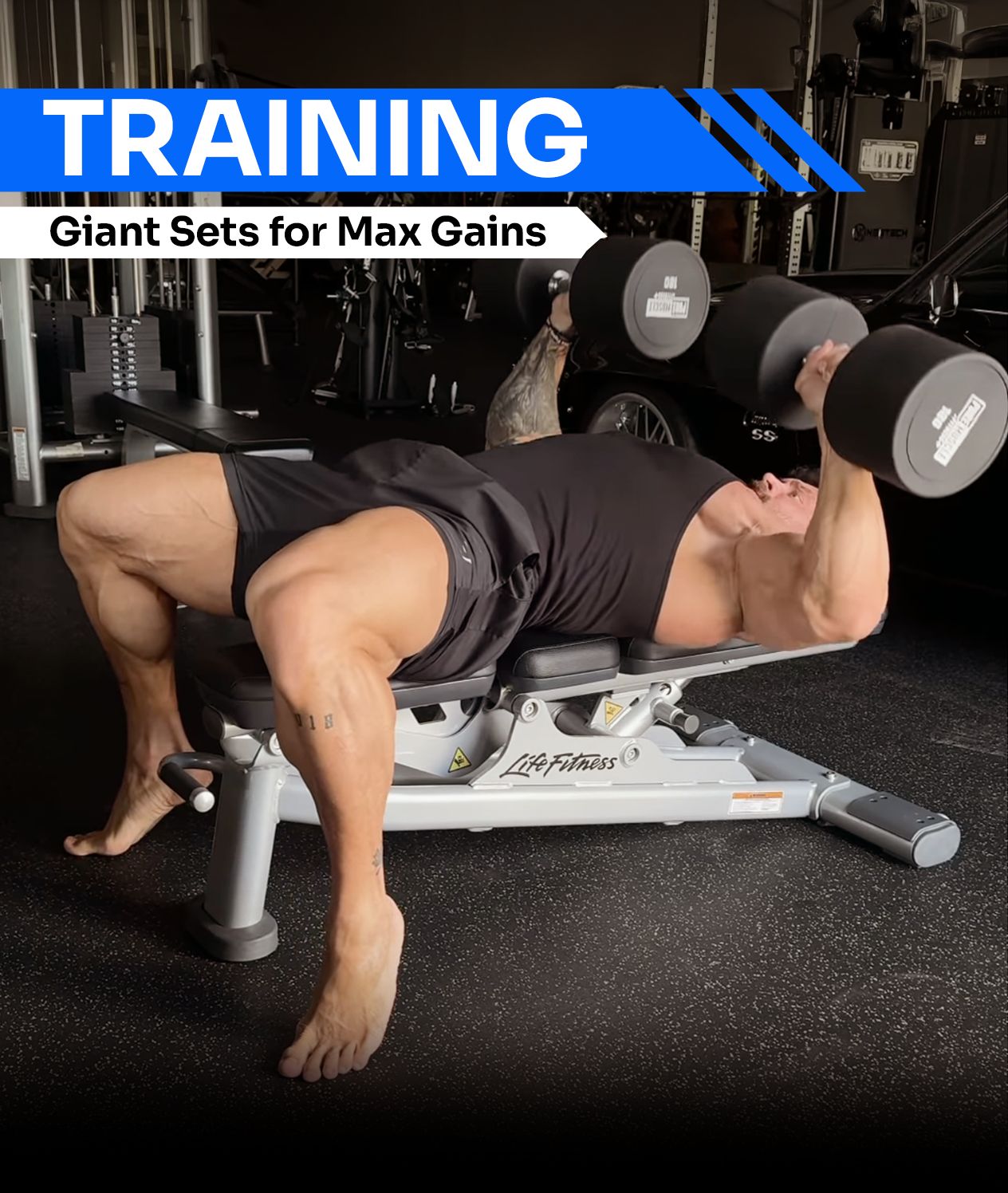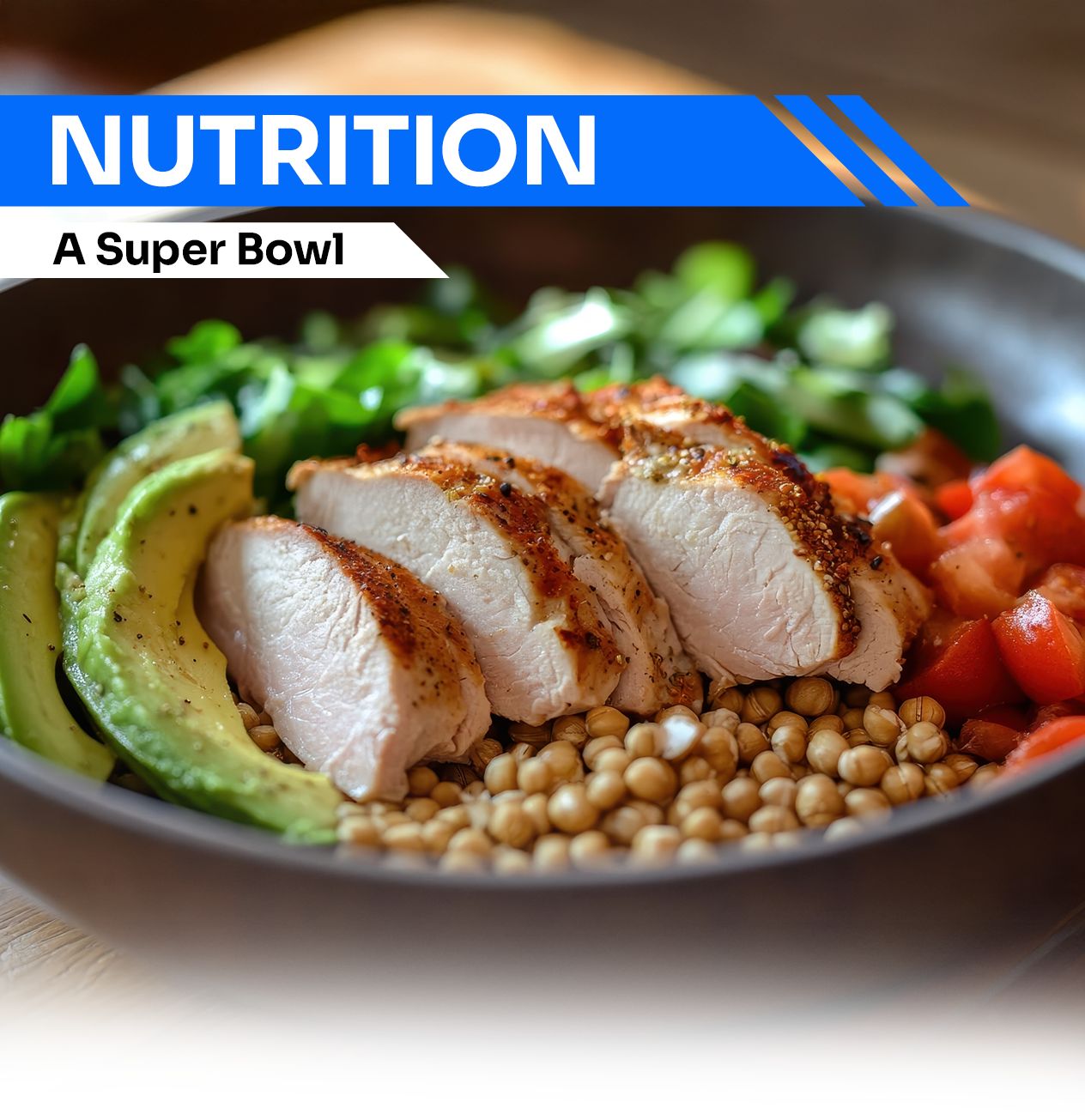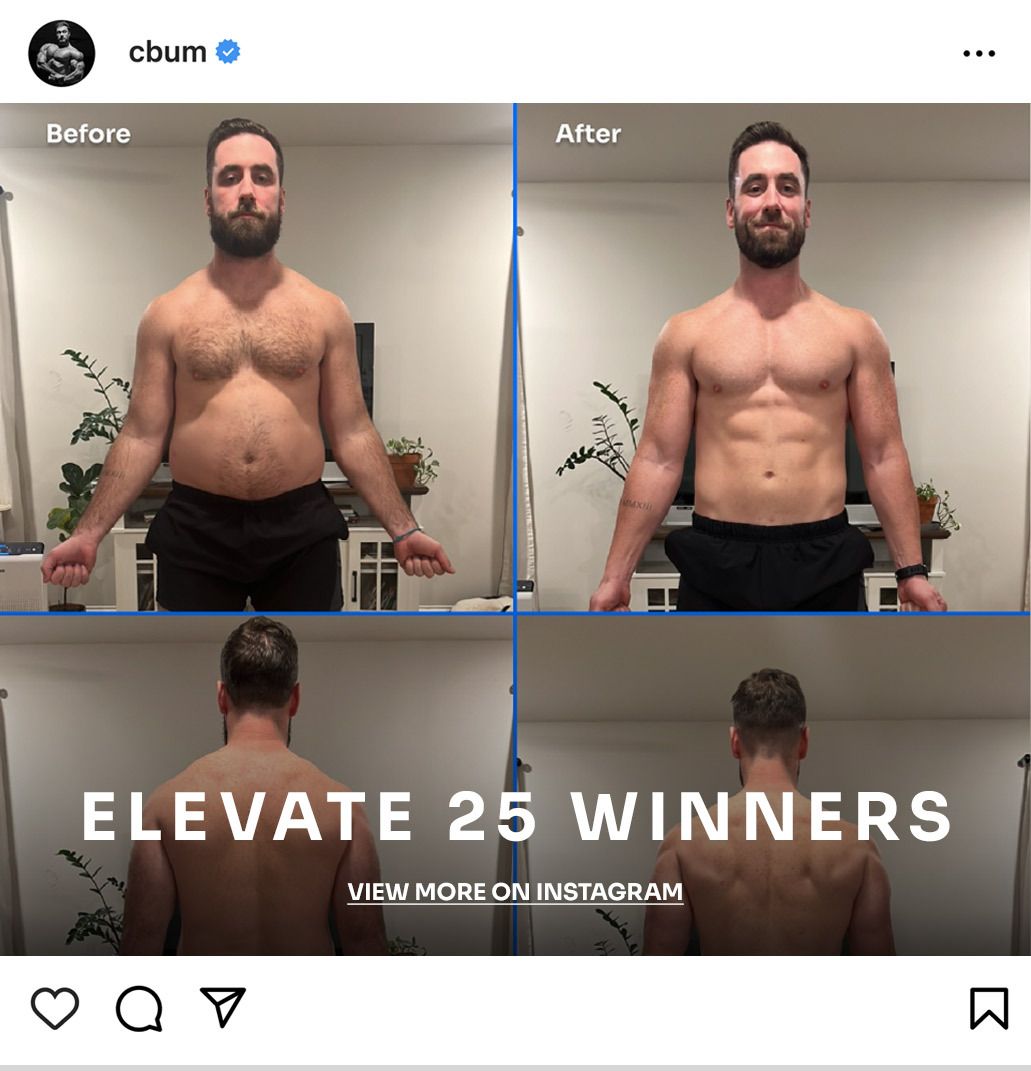- The Standard with Chris Bumstead
- Posts
- Grow Your Chest Fast with Giant Sets
Grow Your Chest Fast with Giant Sets
Brutal sets for serious chest gains. Plus: 4 steps to smarter bulking, my go-to supplements, and a power bowl that actually fuels growth.


Clean Bulking Made Simple
Giant Sets for Massive Pecs
A Protein-Packed Power Bowl
Supplements That Work
Bulking questions hit my DMs all the time. When should I bulk? How long should I bulk? What’s the best way to bulk?
And honestly? There’s no one-size-fits-all answer.
I’ve spent years testing every approach: clean bulking, eating like a machine, and tracking every macro down to the gram. I’ve bulked too fast, gained too much fat, and had to cut harder than I wanted to. I’ve done it wrong. I’ve also done it right. And the biggest lesson I’ve learned?
The best bulk is the one that actually works for you.
That means knowing your body, paying attention to what it responds to, and adapting over time. The people who make the biggest mistakes are the ones who think there’s only one way to do it. They blindly follow someone else’s plan without considering their own metabolism, appetite, digestion, and lifestyle.
This isn’t just about adding size, it’s about building muscle in a way that supports your long-term progress.
You don’t want to spend six months gaining a bunch of unnecessary fat just to spend another six months trying to take it off. A smart bulk, though, can set you up for long-term growth.
Step One: Start in the Right Place
Before you even think about bulking, take a hard look in the mirror. If you’re already carrying more body fat than you’re comfortable with, bulking isn’t your next step. You’ll just end up adding fat on top of fat.
I always liked to start a bulk around 12% body fat — still lean, abs visible. That way, I had room to grow without tipping over into sloppy territory.
You need to be honest with yourself. If you’re soft at the waist and not happy with how you look, don’t bulk yet. Dial it back, cut down a little, and then build back up from a leaner base.
Step Two: Track and Adjust, Don’t Just Eat
Bulking isn’t just about stuffing down calories, it’s about managing your intake so you’re actually gaining muscle, not just weight.
Start by figuring out your maintenance calories -- how much food keeps your weight steady. Once you know that, add 300 to 500 calories per day and monitor the changes.
If you’re gaining too fast (more than 1-2 lbs. per week), dial it back.
If you’re not gaining at all, add more food.
If your progress is stagnating, make sure you’re fueling properly.
The easiest way to do this? Track your food. If you don’t measure it, you can’t manage it. You don’t need to be obsessive, but you should have a solid idea of what’s going into your body every day.
As for macros, stick to 1g of protein per pound of body weight. Carbs are your best friend during a bulk because your body uses them for energy first instead of breaking down muscle. Keep fats in the 20% to 30% range and let carbs fill in the rest.
Step Three: Eat With Intention
Your food choices matter. You can get away with eating junk when you’re young, but trust me, it catches up to you. Whole foods should be the base of your bulk.
Eat whole foods like lean meats, fish, vegetables, rice, and eggs.
Limit processed junk, it just makes you bloated, sluggish, and inflamed.
Use cardio strategically, it helps digestion, appetite, and nutrient absorption.
Keep cheat meals under control. One burger isn’t going to kill your gains, but a diet built on fast food will.
Step Four: Treat Bodybuilding Like an Art
Bodybuilding isn’t just about following a formula. It’s about learning your own body and adapting over time.
What worked for me in my early 20s isn’t what worked in my late 20s. What worked when I was deep in prep wasn’t what worked in the offseason. That’s why you need to track everything — your food, training, weight, how you feel — and adjust as you go.
At the end of the day, the best bulk isn’t the one some random coach on Instagram tells you to do. It’s the one that keeps you progressing, keeps you feeling good, and fits your body and goals.
That’s how you make gains the right way.
Set the Standard!
Chris

The Training Method That Helped Chris Pack on Size 💪🔥
When Chris was prepping for his final Olympia, he pushed his off-season weight higher than ever while staying as lean and athletic as possible. That’s not easy, it takes the right training, the right intensity, and a serious commitment to progressive overload.
And the exact program he used to do it? It’s inside the STNDRD app right now.
One of the most effective (and brutal) techniques Chris used during this bulk was Giant Sets, a method designed to completely exhaust a muscle by stacking multiple exercises back-to-back.
This approach forces maximum fiber recruitment, increases time under tension, and spikes metabolic stress, all of which lead to serious hypertrophy.
How to Use Giant Sets for a Massive Chest 💥
Want to train like Chris did during his Olympia bulk? Try this Giant Set for chest, it’s the same intensity-driven method that helped him pack on size while staying lean.
🛑 The Rules:
✅ Pick four exercises targeting the same muscle group.
✅ Take minimal rest between moves, just enough time to transition.
✅ Go to failure on every set (safely, of course).
✅ Take 2-3 minutes rest between full rounds, then repeat for 3-4 total sets.
Chris Bumstead’s Giant Set for Chest 👊
🔥 Incline Dumbbell Press – 10-12 reps to failure
🔥 Flat Dumbbell Press – 8-10 reps to failure
🔥 Flat Dumbbell Fly – 10-12 reps to failure
🔥 Bodyweight Push-ups – Max reps to absolute failure
Why This Works:
✔ Insane muscle fatigue: Giant Sets drive deeper fiber recruitment by keeping tension high.
✔ Brutal time under tension: More strain = more growth.
✔ Increased calorie burn + metabolic stress: Helps build size without getting sloppy.
✔ Maximizes every phase of the lift: Pressing movements handle overload, while the fly hammers the stretch, and push-ups force a deep burn at the end.
Train Smarter, Grow Faster
Giant Sets work best when you have the food and recovery to back them up. That’s why they’re perfect for a bulk phase when calories are high and energy is up. Chris used this method throughout his Road to Olympia program to build serious size while staying dialed in.
Want to follow Chris’s actual bulk step-by-step? The full program is inside the STNDRD app, and it’s purpose built for real muscle growth.
🚀 Time to push past your limits!
— Justin King

Recipe for Success: The Standard Power Bowl 🔥💪
A clean, high-protein, muscle-building lunch or dinner packed with whole foods.
Chris keeps his meals simple, whole, and nutrient-dense. When he’s bulking, he focuses on quality proteins, easy-to-digest carbs, and healthy fats to fuel recovery and performance.
This one-bowl meal is easy to prep, customizable, and delivers clean calories for steady muscle growth.
Ingredients (1 serving)
✅ 6 oz grilled chicken breast OR 90% lean grass-fed beef
✅ 1 cup cooked jasmine rice OR 1 medium roasted sweet potato (150g)
✅ 1/2 cup sautéed zucchini & bell peppers (or any mix of veggies)
✅ 1 tbsp olive oil or grass-fed butter (for healthy fats)
✅ 1/4 avocado (adds extra healthy fats & texture)
✅ 1 tbsp coconut aminos OR low-sodium soy sauce (for flavor)
✅ 1/2 tsp garlic powder + 1/2 tsp paprika, salt + pepper
Macros (approximate per bowl, using chicken & rice):
🔥 Calories: 650-700 kcal
💪 Protein: 55g
⚡ Carbs: 70g
🥩 Fats: 20g
Instructions
Cook the protein: Grill or pan-cook chicken (seasoned with salt, pepper, garlic powder, and paprika) or beef until fully cooked (165°F for chicken, 160°F for beef).
Prep the carbs: If using rice, cook 1 cup of jasmine rice according to package instructions. If using sweet potato, roast at 400°F for 30-35 minutes until soft.
Sauté the veggies: In a pan, heat 1 tbsp olive oil and cook zucchini + bell peppers for 5 minutes until slightly tender.
Assemble the bowl: Add rice or sweet potatoes as the base, top with grilled protein, sautéed veggies, and 1/4 sliced avocado for extra nutrients.
Drizzle with coconut aminos or soy sauce, mix, and enjoy!
Why This Works for Bulking:
High protein + clean calories: Whole food sources help build muscle without dirty bulking.
Easy to digest: Keeps gut health in check so you absorb nutrients efficiently.
Satisfying + nutrient-dense: Fuels training, recovery, and growth without making you sluggish.
Customizable: Swap in salmon, steak, quinoa, or different veggies based on your goals and preferences.
💡 Chris’s Pro Tip: “I eat meals like this every day when I’m bulking. It’s easy to meal prep, packs in the calories cleanly, and keeps my energy solid. If you’re struggling to eat enough, add more olive oil or avocado for extra calories without feeling stuffed.”
🔥 Set the Standard — Eat Clean, Train Hard, Get Bigger.

Q: Hi Chris, what are your go-to supplements?
— Levi H., Gettysburg, Pennsylvania
A: Hey, Levi, supplements aren’t magic. If your diet sucks, no amount of powders and pills will fix it. But when you’re training hard, eating right, and pushing your body, the right stack makes a difference.
Here’s are my go-tos:
💪 Creatine Monohydrate (5g daily)
If you’re not taking creatine, you’re falling behind. It’s the most researched, effective supplement for strength, power, and recovery.
It helps your muscles hold more water, meaning better endurance and bigger pumps.
🥩 Protein Powder (post-workout & extra calories)
I try to hit my 1g of protein per pound of body weight with whole foods first, but shakes make it easier.
I go 50g whey + 50-75g carbs post-workout to jumpstart recovery.
🔥 Digestive Support (a game-changer for bulking)
When you’re eating thousands of calories a day to put on muscle, digestion becomes just as important as training. If your gut isn’t processing food efficiently, you’re wasting nutrients and slowing down recovery.
These digestive aids help ensure maximum nutrient absorption and keep your stomach from feeling like a bloated mess.
Digestive enzymes – Help break down protein, fats, and carbohydrates, making it easier for your body to absorb and utilize nutrients. This is especially important when you’re eating large amounts of food during a bulking phase.
Betaine HCL – Supports stomach acid production, which is key for breaking down protein and preventing bloating, indigestion, and nutrient malabsorption.
GDAs (Glucose Disposal Agents) – Help shuttle carbohydrates into your muscles instead of being stored as fat. They improve insulin sensitivity and help your body use carbs for fuel and recovery rather than just packing on unwanted weight.
Bottom line: If you’re struggling to eat enough, feeling sluggish after meals, or dealing with bloating, these can make a massive difference in how well your body handles your bulk.
Note: These are what work for me, but use trial and error to make sure you’re doing what’s right for you.
Go to RAW Nutrition and use discount code CBUM for the best deal on all of our products!
Question for Chris? Hit reply or email [email protected] and we’ll consider it for inclusion in a future issue of The Standard.
Champion Mentality
“It’s easy to convince yourself you’re waiting for something to happen to start chasing your goals, but most of the time the only obstacle you’re facing is the fear of starting something new.”
Introducing: The New STNDRD in Fitness!

I’m stoked to launch my new app, STNDRD. Get my daily workouts, track your nutrition, connect with our community, get discounts on merch, and more.
Download it on Apple or Google Play today!
Did a friend forward this to you? You can subscribe here to raise your standard for mental and physical strength.





Reply